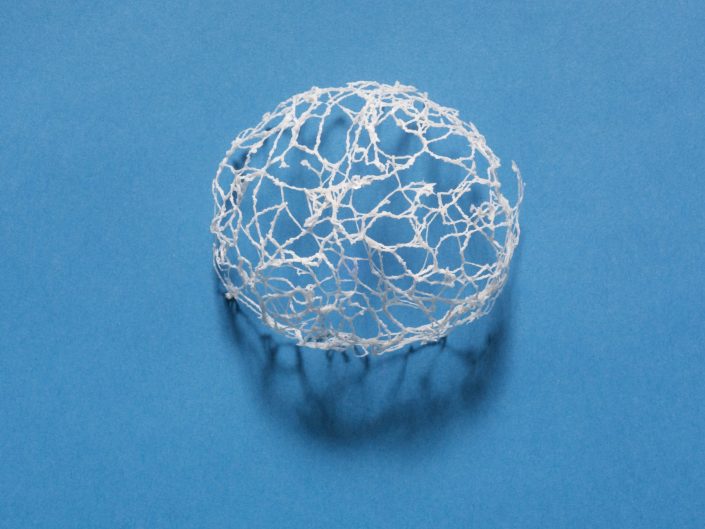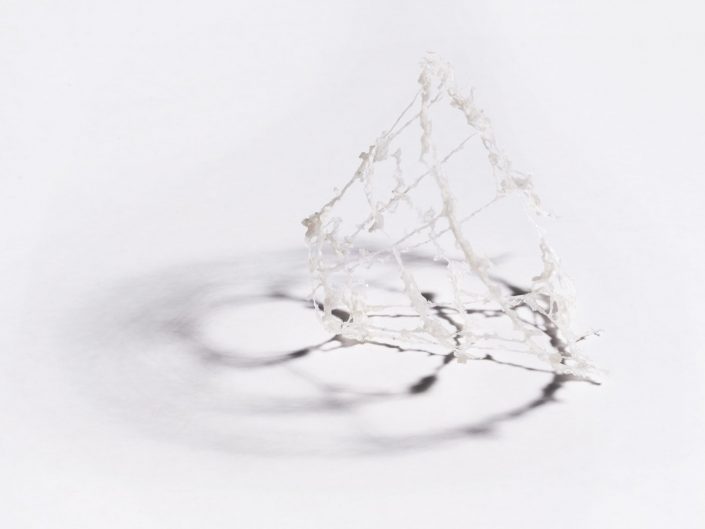TEAM: Steven Spoljaric, Jukka Seppälä (Aalto University)
Background
Monofilaments were prepared from enzymatically-fibrillated pulp blended with crosslinked polymer and a lubricant. The incorporation of crosslinked polymer manipulated dope rheology, allowing successful spinning of filaments. Furthermore, strength, stiffness and a degree of water stability were incorporated. The addition of lubricant increased filament ductility and elongation, without compromising strength. Finally, a thermoplastic-cellulose based coating was applied to the filaments to enhance water stability and provide a smooth filament surface.
Characteristics
The structures are tough and hard, yet delicate. Strength and robustness can be increased by applying more filament layers to the structure. The pure monofilaments are rough, however a smooth feel can be achieved by applying a cellulose-based coating. The coating also provides a degree of water stability.
Technical Data
Dry tensile strength of monofilament is 40 ± 6 MPa and elongation at break 1-5 %. Wet tensile strength is 65 ± 4 MPa and elongation 17± 2 %.
Reference values for dry cotton yarn are 625 ± 225 MPa and 3-8%, and for wet cotton yarn 590 ± 150 MPa and 9 ± 2 %.
Potential Applications
The non-woven structures can be utilised in various 3-D and 2-D applications, including interior decoration and décor products, furnishings, matts/coverings and construction applications.
Photos: Eeva Suorlahti



